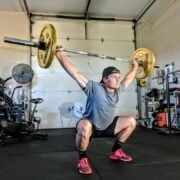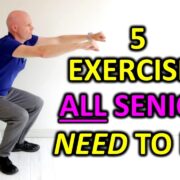
The Importance of Exercise and Improving Heart Strength
 Exploring the benefits of exercise on heart health and overall fitness.
Exploring the benefits of exercise on heart health and overall fitness.
Maximizing Heart Capacity
When it comes to optimizing our cardiovascular system, one key aspect to focus on is maximizing heart capacity. The heart is a vital organ that pumps oxygen-rich blood throughout our body, delivering the necessary nutrients and removing waste products. By understanding how to take the heart to its maximum or near maximum capacity, we can improve our overall physical performance and endurance.
Taking the Heart to Its Maximum Capacity
Our heart is a muscular organ that works tirelessly to keep us alive and functioning. When we engage in physical activity, such as exercise or sports, our heart rate increases to meet the increased demand for oxygen and nutrients by our muscles. By pushing our heart to work harder and reach its maximum capacity, we can enhance its efficiency and strengthen its overall performance.
- Engage in regular aerobic exercise: Activities like running, swimming, or cycling can help increase your heart rate and improve cardiovascular fitness.
- Incorporate high-intensity interval training (HIIT): Alternating between intense bursts of activity and short recovery periods can push your heart to work harder and reach higher levels of exertion.
- Monitor your heart rate: Using a heart rate monitor during exercise can help you track your intensity levels and ensure you are challenging your heart appropriately.
Understanding Oxygen Intake and Distribution during Exercise
Oxygen is a crucial element for our muscles to function effectively during exercise. As we increase our physical activity, our body’s demand for oxygen also rises. The heart plays a vital role in transporting oxygen-rich blood from the lungs to the working muscles, ensuring they have an adequate oxygen supply to sustain their efforts.
- Breathe deeply and steadily: Proper breathing technique during exercise can help optimize oxygen intake and improve the efficiency of oxygen distribution throughout the body.
- Focus on inhaling through your nose and exhaling through your mouth: This technique can help regulate your breathing pattern and enhance oxygen delivery to your muscles.
- Stay hydrated: Adequate hydration is essential for maintaining optimal blood volume and ensuring efficient oxygen transport by the cardiovascular system.
Improving Efficiency of Oxygen Transfer from Lungs to Bloodstream
The process of oxygen transfer from the lungs to the bloodstream is facilitated by the respiratory and cardiovascular systems working in harmony. Maximizing the efficiency of this process can have a significant impact on our overall physical performance and endurance during exercise.
“By optimizing the exchange of oxygen in the lungs and its delivery to the working muscles, we can enhance our aerobic capacity and improve our stamina.”
- Focus on deep breathing exercises: Practicing deep breathing techniques can strengthen your respiratory muscles and enhance oxygen uptake in the lungs.
- Consume iron-rich foods: Iron is essential for the synthesis of hemoglobin, a protein that carries oxygen in the bloodstream. Including iron-rich foods in your diet can improve oxygen transport efficiency.
- Engage in cardiovascular activities: Regular cardiovascular exercise can enhance lung function and improve the efficiency of oxygen transfer from the lungs to the bloodstream.
By focusing on maximizing heart capacity, understanding oxygen intake and distribution during exercise, and improving the efficiency of oxygen transfer from the lungs to the bloodstream, we can optimize our cardiovascular system and enhance our overall physical performance.
Strengthening the Heart
When it comes to improving overall health and fitness, one cannot overlook the importance of strengthening the heart. A strong and healthy heart is essential for optimal performance, endurance, and overall well-being. In this blog post, we will delve into the various aspects of strengthening the heart, including increasing the number of capillaries and muscle cell efficiency, understanding the role of the heart as a pump for better fitness, and exploring different forms of exercise that can help in enhancing heart health.
Increasing Number of Capillaries and Muscle Cell Efficiency
Capillaries are tiny blood vessels that play a crucial role in transporting oxygen and nutrients to the muscles and organs in the body. By increasing the number of capillaries, we can improve the delivery of oxygen-rich blood to the muscles, which is essential for enhancing endurance and performance during physical activities.
Moreover, improving muscle cell efficiency allows the muscles to utilize oxygen more effectively, leading to better energy production and reduced fatigue. This process is vital for enhancing overall physical performance and promoting cardiovascular health.
Role of Heart as a Pump for Better Fitness
The heart acts as a powerful pump that is responsible for circulating blood throughout the body. With each heartbeat, the heart pumps oxygenated blood to the muscles and organs, while simultaneously receiving deoxygenated blood to be reoxygenated in the lungs. This continuous circulation is essential for maintaining optimal function of the body and supporting physical activities.
By strengthening the heart muscle through regular exercise and physical activity, we can improve its pumping efficiency, leading to better cardiovascular health and enhanced fitness levels. A strong heart can pump more blood with each beat, allowing for improved circulation and better delivery of oxygen and nutrients to the body’s tissues.
Various Forms of Exercise to Strengthen the Heart
There are several forms of exercise that are particularly effective in strengthening the heart and improving cardiovascular health. Some of the most popular and beneficial activities include:
- Aerobic Exercise: Activities such as running, swimming, cycling, and aerobics are excellent for increasing heart rate, improving lung capacity, and enhancing overall cardiovascular fitness.
- Strength Training: Incorporating resistance training into your workout routine can help build muscle mass, boost metabolism, and support heart health by reducing the risk of heart disease and other cardiovascular conditions.
- Interval Training: Alternating between high-intensity bursts of exercise and periods of rest or lower intensity can challenge the heart and improve its efficiency in pumping blood, resulting in enhanced cardiovascular performance.
- Yoga and Pilates: These forms of exercise focus on flexibility, balance, and core strength, which are essential for overall fitness and can contribute to better heart health through stress reduction and improved circulation.
It is important to consult with a healthcare provider or fitness professional before starting any new exercise regimen, especially if you have pre-existing health conditions or concerns about your heart health. By incorporating a variety of exercises into your routine and focusing on activities that target cardiovascular fitness, you can effectively strengthen your heart and improve your overall well-being.
Benefits of HIIT
High-Intensity Interval Training (HIIT) has gained immense popularity in the fitness world for its numerous benefits. Let’s delve into how HIIT stands out when compared to steady-state cardio for heart strength, the physiological adaptations it triggers like increased cardiac output, and its role in improving VO₂ max and longevity.
Comparison with Steady State Cardio for Heart Strength
When it comes to heart strength, HIIT offers unique advantages over traditional steady-state cardio routines. While steady-state cardio, such as jogging or cycling at a consistent pace, can be effective in enhancing cardiovascular health, HIIT takes a different approach by incorporating short bursts of intense exercise followed by brief recovery periods.
This variation in intensity challenges the heart in a different way, leading to increased heart rate and blood flow. The high-intensity intervals push the heart to work harder, which can result in improved cardiac function over time. Studies have shown that HIIT can be more time-efficient than steady-state cardio while providing similar, if not superior, benefits for heart strength.
Physiological Adaptations with HIIT like Increased Cardiac Output
One of the key physiological adaptations associated with HIIT is the increase in cardiac output. Cardiac output refers to the volume of blood pumped by the heart per minute and is a crucial factor in overall cardiovascular fitness. HIIT challenges the cardiovascular system by requiring quick adjustments in heart rate and blood flow during intense intervals.
Through consistent HIIT workouts, the heart becomes more efficient at pumping blood to the muscles, allowing for improved oxygen delivery and waste removal. This enhanced cardiac output not only benefits athletic performance but also contributes to overall heart health. The adaptability of the heart to meet the demands of high-intensity exercise plays a significant role in the effectiveness of HIIT as a training method.
Improving VO₂ Max and Longevity through HIIT
Another remarkable benefit of HIIT is its ability to enhance VO₂ max, a measure of the maximum amount of oxygen your body can utilize during exercise. VO₂ max is a key indicator of aerobic endurance and overall fitness level. By pushing the limits of oxygen consumption during intense intervals, HIIT can lead to significant improvements in VO₂ max.
Studies have shown that HIIT can produce rapid increases in VO₂ max compared to traditional steady-state cardio. This is attributed to the intense nature of HIIT workouts, which challenge the cardiovascular and respiratory systems to adapt and become more efficient. By improving VO₂ max, individuals can perform better during physical activities and may experience enhanced longevity due to the positive impact on cardiovascular health.
In conclusion, HIIT offers a multitude of benefits that set it apart as a highly effective training method. From improving heart strength through unique intensity variations to triggering physiological adaptations like increased cardiac output, and enhancing VO₂ max for better endurance and longevity, HIIT continues to prove its worth in the fitness world.
Maintaining Fitness as We Age
As we age, it becomes increasingly important to prioritize our fitness levels in order to maintain a healthy and active lifestyle. In this blog section, we will explore the significance of flexibility, the benefits of Yoga Body Teachers College sponsorship, the correlation between VO₂ max and mortality risk, and the substantial reduction in mortality risk associated with improved VO₂ max.
Importance of Flexibility and Yoga Body Teachers College Sponsorship
Flexibility plays a crucial role in overall fitness and well-being, especially as we age. Maintaining good flexibility can enhance joint mobility, reduce the risk of injuries, and improve posture. One effective way to enhance flexibility is through practicing yoga.
The Yoga Body Teachers College sponsorship offers a unique opportunity to deepen your yoga practice, enhance your flexibility, and learn from experienced instructors. By participating in their programs, you can not only improve your physical flexibility but also experience mental relaxation and stress relief.
Correlation between VO₂ Max and Mortality Risk
VO₂ max, or maximal oxygen consumption, is a key indicator of cardiovascular fitness and endurance. Research has shown a direct correlation between VO₂ max levels and mortality risk. Individuals with higher VO₂ max tend to have a lower risk of various health conditions and are more likely to live longer.
Regular physical activity, such as aerobic exercises, can help improve VO₂ max levels and strengthen the heart and lungs. By incorporating cardiovascular exercises into your fitness routine, you can boost your VO₂ max and reduce the risk of premature mortality.
Significant Reduction in Mortality Risk with Improved VO₂ Max
Studies have demonstrated that individuals who increase their VO₂ max through regular exercise and fitness activities experience a significant reduction in mortality risk. By improving your cardiovascular fitness and enhancing your body’s capacity to utilize oxygen, you can protect yourself against various chronic diseases and health complications.
Whether it’s through engaging in aerobic exercises, participating in high-intensity interval training, or incorporating other cardiovascular activities into your routine, enhancing your VO₂ max can have profound effects on your overall health and longevity.
TL;DR
As we age, maintaining fitness is crucial. Flexibility and Yoga Body Teachers College sponsorship can enhance well-being. VO₂ max levels are linked to mortality risk, and improving them can lead to a longer, healthier life.


















